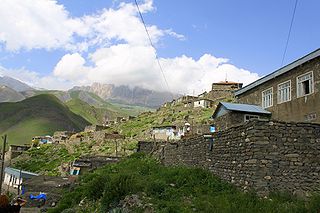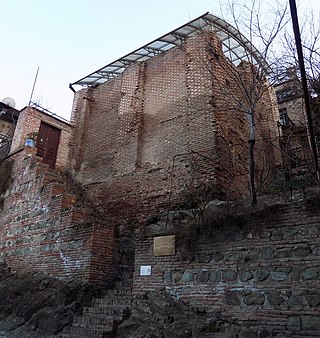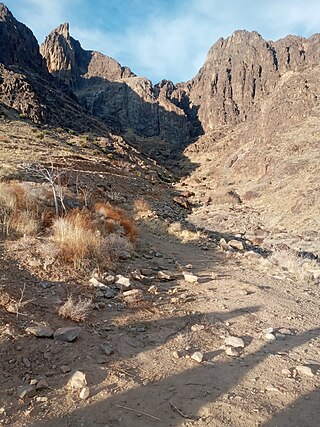
Chaharmahal and Bakhtiari Province is one of the 31 provinces of Iran. Its capital is the city of Shahr-e Kord. The province lies in the southwest of the country, with an area of 16,332 square kilometers.

Paveh is a city in the Central District of Paveh County, Kermanshah province, Iran, serving as capital of both the county and the district. It is in a region called Hawraman.

Razavi Khorasan province is one of the 31 provinces of Iran, located in northeastern Iran. Its capital is the city of Mashhad, the second-most-populous city in Iran.

Kashmar is a city in the Central District of Kashmar County, Razavi Khorasan province, Iran, serving as capital of both the county and the district. Kashmar is near the river Shesh Taraz in the western part of the province, and south of the province's capital Mashhad, in Iran, from east to Bardaskan, west to Torbat-e Heydarieh, north to Nishapur, south to Gonabad. Until two centuries ago, this city was named Torshiz (ترشیز).

The Ateshgah of Baku, Azerbaijani: Atəşgah), often called the "Fire Temple of Baku", is a castle-like religious temple in Surakhany town, a suburb in Baku, Azerbaijan.

Suraxanı is a settlement and raion of Baku, Azerbaijan. It has a population of 210,500.

Khinalug or Khinalyg, is a municipality and an ancient Caucasian village with origins dating back to the Caucasian Albanian period. It is located high up in the mountains of Quba District, Azerbaijan. The municipality of Khinalug is part of the Quba District and consists of the villages of Khinalug and Galaykhudat. The village was included in the Cultural Landscape of Khinalig People and "Köç Yolu" Transhumance Route UNESCO World Heritage Site in 2023.

Zoroastrianism in Azerbaijan goes back to the first millennium BC or earlier and was the predominant religion of Greater Iran before the conversion to Islam.
Atashgah or Ateshgah may refer to:

The Fire Temple of Isfahan is a Sassanid-era archaeological complex located on a hill of the same name about eight kilometers west of city center of Isfahan, Iran.
Atashgah is a village in, and the capital of, Arjestan Rural District of Sabalan District, Sareyn County, Ardabil province, Iran.
Atashgah is a village in Kamalabad Rural District, in the Central District of Karaj County, Alborz Province, Iran. At the 2006 census, its population was 520, in 137 families.
Hajjiabad-e Atashgah is a village in Lajran Rural District, in the Central District of Garmsar County, Semnan Province, Iran. At the 2006 census, its population was 827, in 221 families.
Atashgah is a village in Sardasht Rural District, in the Central District of Lordegan County, Chaharmahal and Bakhtiari Province, Iran. At the 2006 census, its population was 382, in 66 families. The village is populated by Lurs.
Ateshgah-e Bozorg is a village in Tayebi-ye Garmsiri-ye Shomali Rural District, in the Central District of Landeh County, Kohgiluyeh and Boyer-Ahmad Province, Iran. At the 2006 census, its population was 104, in 20 families.
Atashgah-e Jadid is a village in Shaban Rural District, in the Central District of Meshgin Shahr County, Ardabil Province, Iran. At the 2006 census, its population was 185, in 41 families.

The Atashgah, also transcribed as 'Ateshgah is an ancient Zoroastrian fire temple in Tbilisi, Georgia. It was built when Georgia was a part of Persian Empire in Sasanian era. It is described as the "northernmost Zoroastrian fire-temple in the world."
Atashgah is a village in Pasikhan Rural District, in the Central District of Rasht County, Gilan Province, Iran. At the 2006 census, its population was 1,679, in 461 families.

Adur Burzen-Mihr or Azar Barzin was an Atash Behram located in Parthia. In the Sasanian period, it was one of the three Great Fires and was associated with the farmer class; the other two were Adur Farnbag in Persis which was associated with the priest class, and Adur Gushnasp in Media, which was associated with the warrior class. Its establishment can be dated to the late 5th or early 4th century BC. Adur means "Holy Fire", and Burzēn-Mihr is a Parthian given name which literally means "Exalted is Mihr" and is probably the name of the temple's founder.

Atashgah Castle is a castle in the city of Kashmar, and is one of the attractions of Kashmar. This castle was built by the Sasanian government and it was famous in ancient times.














